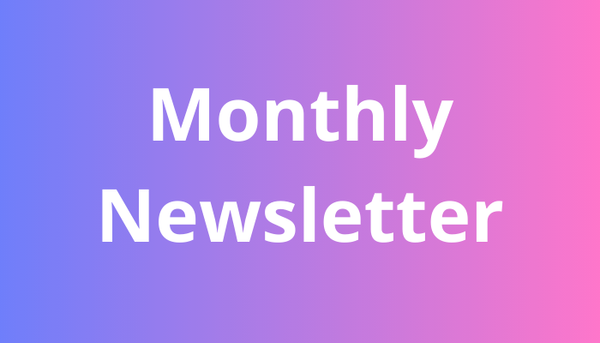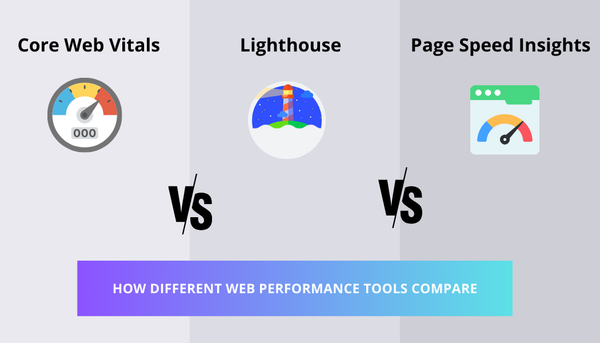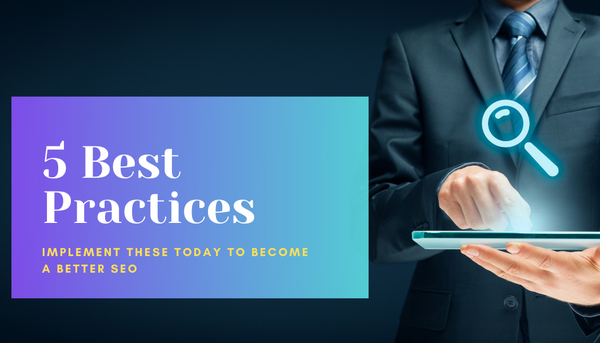Ultimate E-E-A-T Guide for 2024
Learn more about how understanding and implementing EEAT best practices helps take your SEO and marketing strategy to the next level.
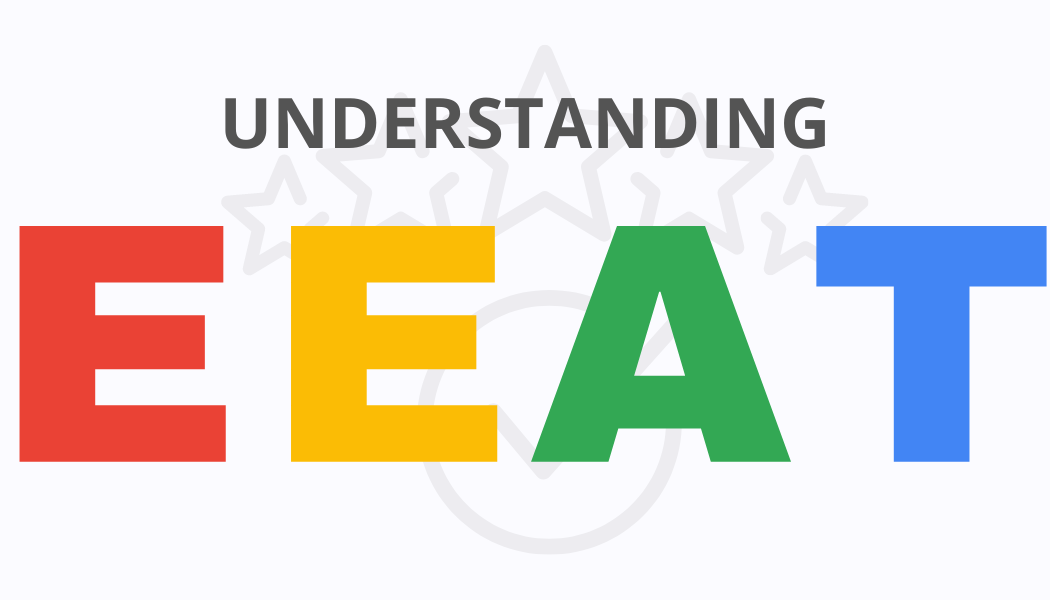
Have you ever researched a health condition online or tried finding expert financial advice? When searching for information like this, you likely want confidence you’re getting the most accurate, credible information possible. Google also wants to provide the most expert, experienced, authoritative, and trustworthy information to searchers, so it places a high emphasis on content and authors that reflect these qualities
Enter EEAT – a crucial search engine optimization concept that heavily influences how Google views your content.
Originally launched in 2014 as just EAT (Expertise, Authoritativeness, Trustworthiness), Google updated the acronym in 2022 by adding an extra E to cover Experience. It can be hard to understand the difference between Expertise and Experience, so read on to learn more.
Before we start, let’s address something real quick. There’s a bit of ongoing confusion around EEAT right now and whether or not it is used as a “ranking signal”.
Google’s search Liaison, Danny Sullivan is quoted on Twitter as saying it isn’t (see below) and it's stirring up a lot of controversy, because …does Google evaluate the quality of your content when ranking it? Absolutely. We know it does and we know what Google has specifically said it deems as high quality.
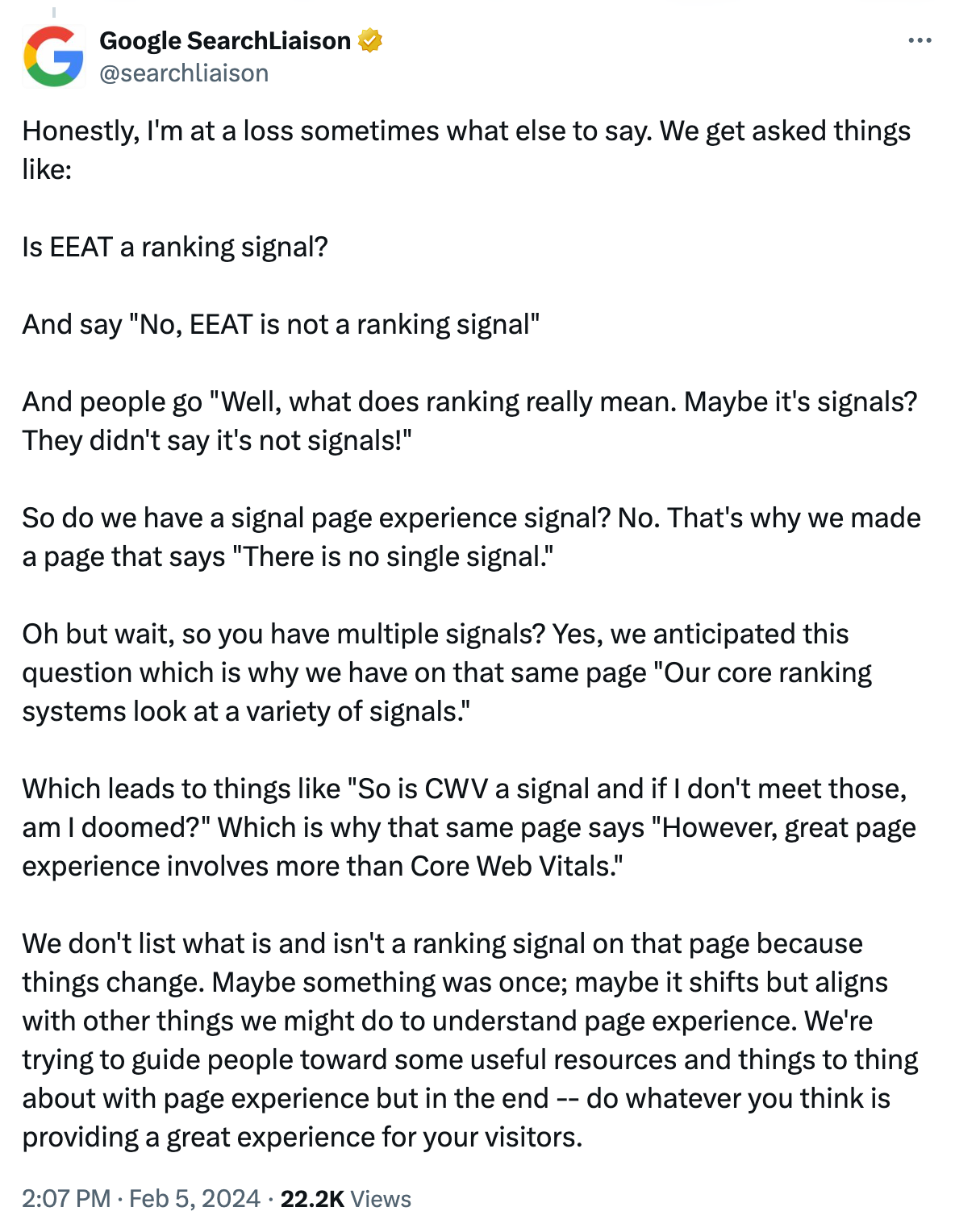
Does Google evaluate expertise? We have clear signals from Google that they do. So what does this mean for EEAT? Whether or not Google says it's part of a specific ranking signal, series of signals or overall way of analyzing a page or content, we know that these quality standards are helpful to content creators who want to rank highly in search.
We also know Google has a history of not confirming what is a ranking signal, or miscommunicating information (whether intentional or not). At any rate, this is what Google has noted on their blog post about Core Updates. And here is useful information about EEAT which in my opinion clearly shows there is an importance to these signals.

Here is a great video from Lily Ray, who often talks about the concept of EEAT. As always in her signature style, I think she really puts this matter to bed.
So, now that we have that out of the way, let's continue:
E-E-A-T and Content Quality
Optimizing for EEAT isn’t just important for SEO, it also builds credibility with readers so they turn to you as an industry leader they can rely on. When your content scores highly on expertise, experience, authoritativeness and trustworthiness, it becomes that much easier to attract and retain loyal readers and fans.
So if you want to level up your content game, understanding EEAT will help you do so. Let's explore what comprises EEAT, strategies to optimize for it, common obstacles, and predictions for the future.
EEAT and YMYL Content
YMYL stands for "Your Money or Your Life" - a term Google uses to classify content pages that could potentially impact the future happiness, health, financial stability, or safety of users. This includes medical, financial, legal and news topics.
Google holds YMYL pages to an even higher standard for expertise, experience, authoritativeness and trustworthiness because the consequences of bad advice could be catastrophic. Providing inaccurate legal counsel could land someone in jail. Unsound medical advice could worsen illnesses. Biased news could manipulate elections.
Given these severe real-world impacts, Google requires YMYL sites to demonstrate:
- Advanced credentials and deep domain expertise in their field
- Extensive background knowledge covering nuances and intricacies
- Real-world application and proven best practices based on experience
- Adherence to strict editorial and fact-checking policies
- Alignment with industry regulations and ethical codes of conduct
Essentially, YMYL content demands the highest demonstrations of EEAT to earn ranking privileges and reader trust. Anything less risks real harm. Optimizing YMYL content requires prioritizing reader needs above all else.
Understanding EEAT in more detail
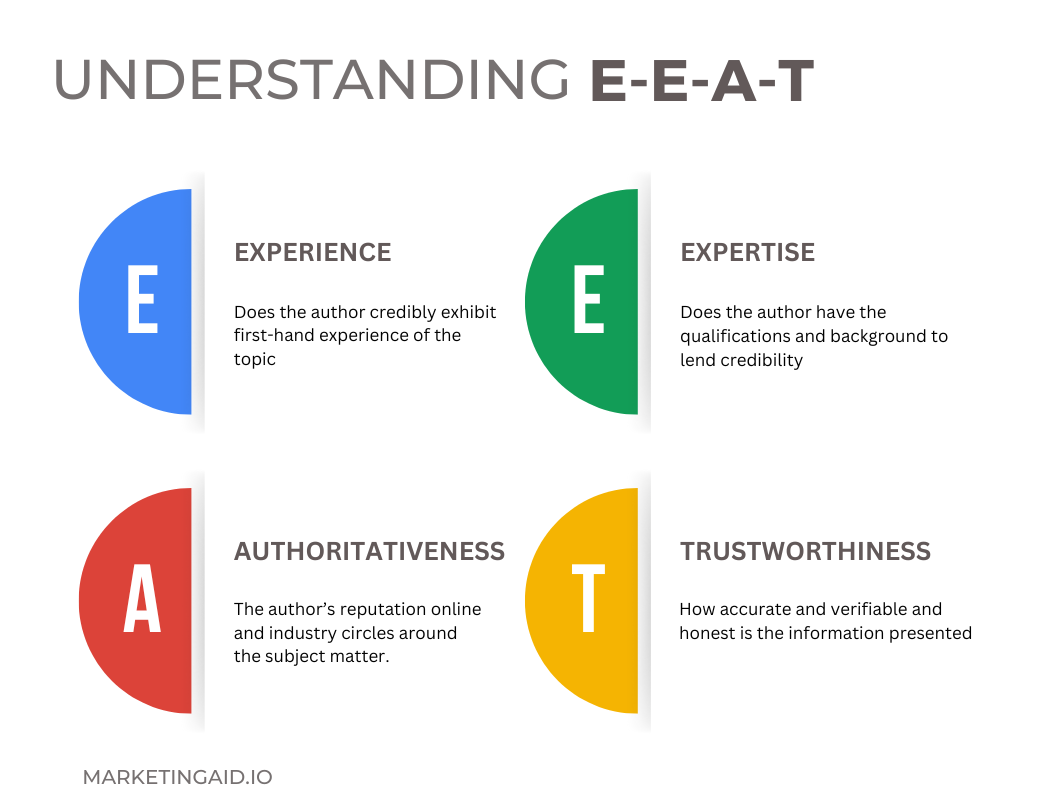
Expertise: The "E" in EEAT
When searching for information online, expertise is critical. You want to have confidence you're getting advice from someone qualified and knowledgeable about the topic.
Not only that, but having some level of expertise yourself - or consulting with experts in the creation of content - will help present a unique viewpoint that isn't already repeated elsewhere. This helps craft original and helpful content for users.
Expertise refers to in-depth knowledge, skills, and qualifications demonstrated through training, education, and first-hand professional experience. It emphasizes depth of mastery vs. superficial familiarity.
Some examples of expertise include:
- Educational degrees, where available
- Professional certifications
- Licenses that allow you to practice in a regulated profession
- Memberships in prestigious professional associations
- Published books and academic articles on the topic
Ways to demonstrate your expertise on your site:
- List your qualifications, education, credentials in an "About Me" section
- Provide bios for each writer detailing their subject-matter credentials
- Link to published books/articles written by your team
- Display trust badges/certifications in website headers/footers
Optimizing your content for expertise establishes you as an authoritative industry voice readers can trust.
Examples:
Using Nerdwallet as an example, this author page focuses on his background, includes a bio discussing his area of expertise, and references other publications he has been featured in
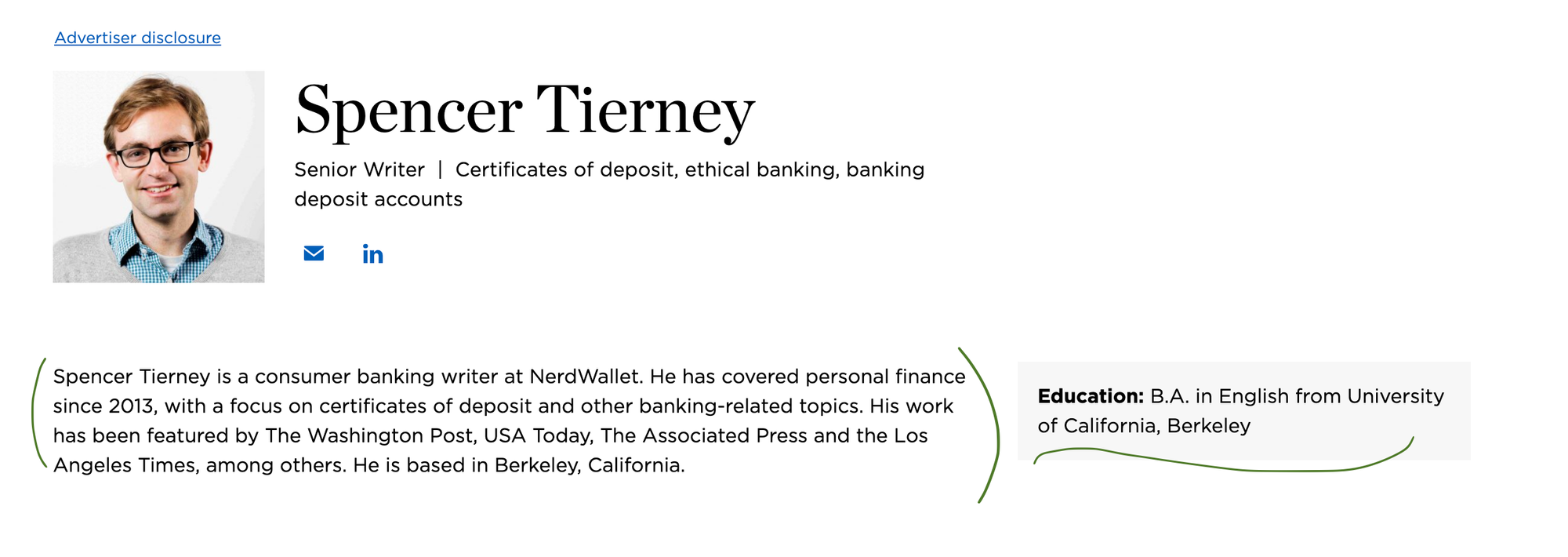
This example is taken from the blog Scary Mommy. The author page also discusses relevant education and where she has been published, which is interesting because writing about parenthood doesn't require a degree, but its still helpful to highlight overall journalism background
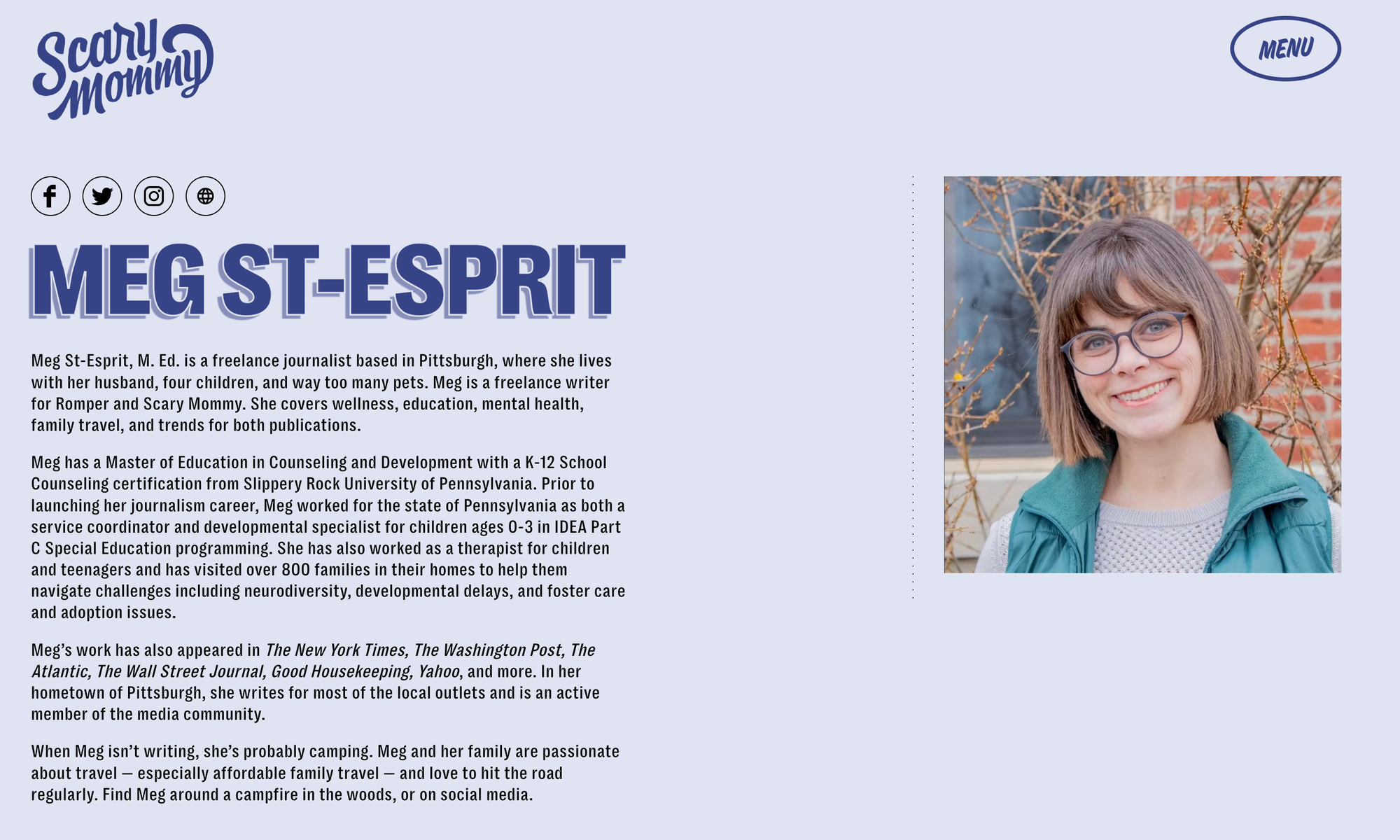
Experience: The Second "E" in EEAT
While expertise is about credentials and subject mastery, experience highlights the value of practical, real-world knowledge. It means you've accumulated wisdom and insights from direct involvement in your field and can demonstrate this through the content you produce,
For example, an academic researcher may have deep expertise in nutrition science but limited experience actually counseling everyday clients on healthy eating. Or a financial advisor might have an MBA but minimal hands-on experience managing investment portfolios.
Google cares about both academic expertise AND on-the-ground experience. In 2022, they formalized this by expanding their EAT acronym to EEAT.
Ways to demonstrate direct experience:
- Quantify years of full-time professional work (e.g. "20 years experience as a coach")
- Estimate hours spent actively practicing your craft
- Showing through video, imagery or other ways that you have direct experience. For example, if you are showing how to make something, incorporate a video of you making the thing.
- Discuss insights learned from mistakes or challenges faced in the field
- Compare/contrast academic knowledge vs. practical knowledge gained
- Share client testimonials and real-world examples of success
Highlighting the "trenches" experience of your writers establishes credibility and relevance. It assures readers you don't just understand the theory but also how concepts apply in real life.
Examples
This example from Growveg about planning an herb garden. It discusses the topic in depth but provides a complimentary video of the author discussing the topic while planning his own herb garden
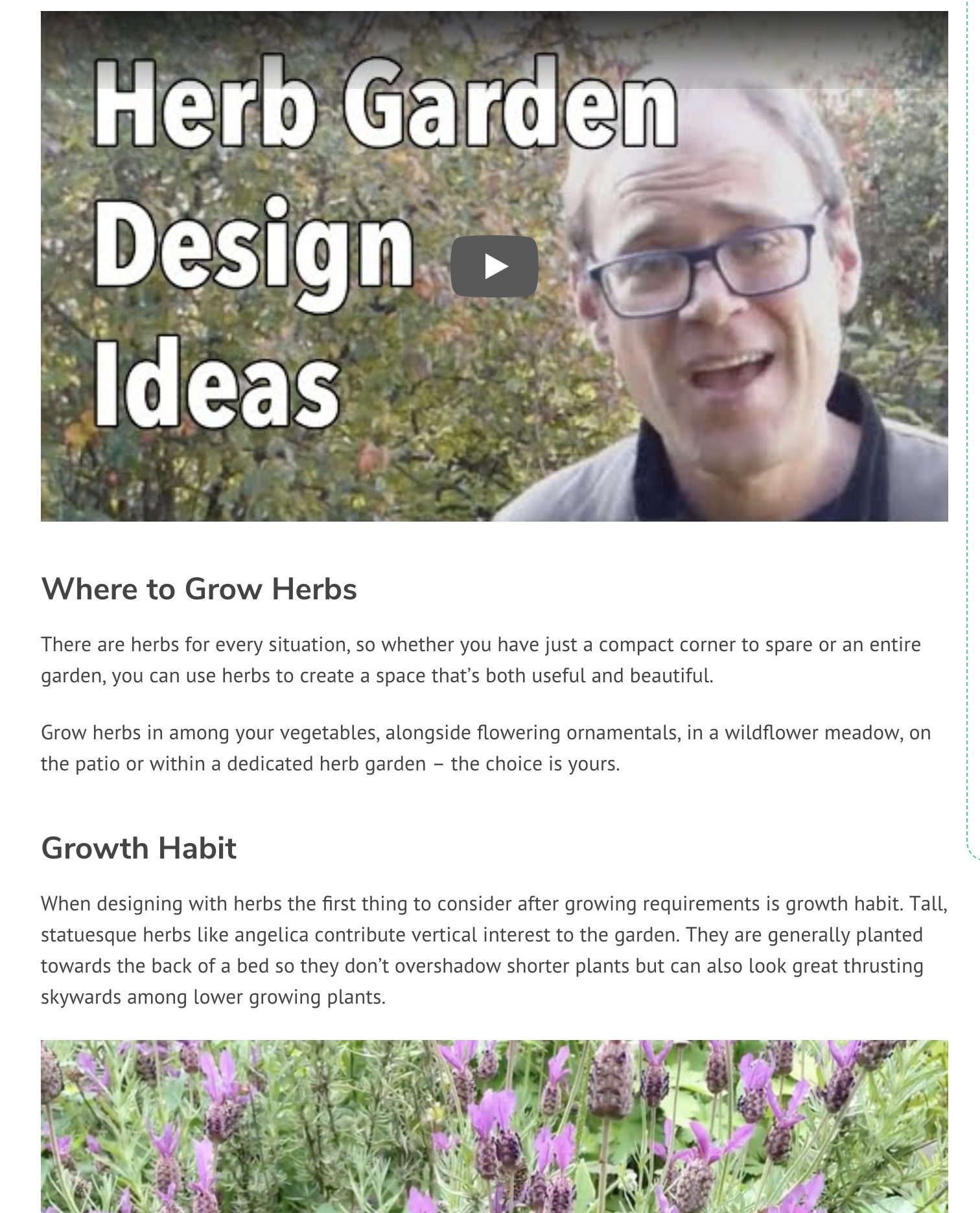
Authoritativeness: The Third Pillar of EEAT
Authoritativeness refers to the degree of influence and reputation you have established in your field and industry. It emphasizes external validation vs. just making self-proclaimed claims of expertise. For example, I may think I am the best cat snuggler in the world, but ultimately that's just my own opinion.
Essentially, Google wants signals that others consider you an authority before they will too.
Some examples of authoritativeness indicators:
- References or links from mainstream media sites like major newspapers, magazines, etc.
- Citations of your work in books, academic journals, or industry publications
- High search engine rankings for valuable informational queries related to your business (this can take time to earn)
- Verified customer reviews showing breadth of market reach and impact
- Industry awards recognizing excellence and achievement
Ways to showcase authoritativeness:
- Link to media mentions and coverage of your business from trusted publications
- Display badges if named "Best of" in an awards category for your region/vertical
- Include testimonials from recognizable brands and thought leaders
- Create an awards page showcasing accolades and credentials
Optimizing for authoritativeness signals you have an established track record of providing value to the industry and community. This earns trust and credibility with both search engines and visitors.
Aleyda does an excellent job of showcasing authoritiveness throughgout her whole site, she not only mentions where she has received awards and been published but includes photos and links
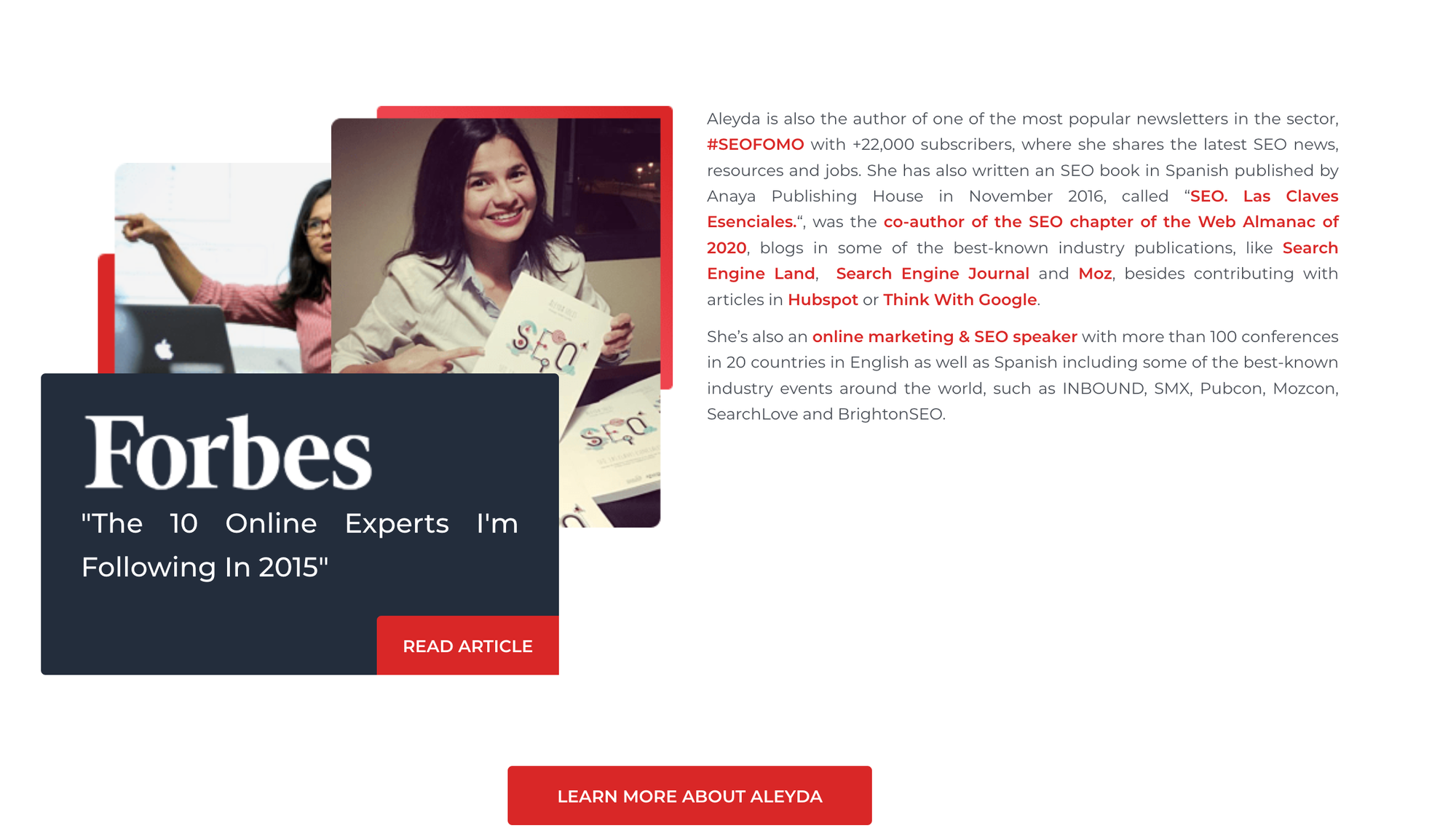
Trustworthiness: The Fourth Pillar of EEAT
Without trustworthiness, your expertise, experience and authoritativeness don’t carry much weight. Readers need confidence your information is credible and reliable.
Trust emphasizes qualities like dependability, honesty, integrity and transparency. It means readers feel secure you have their best interests in mind.
Some ways to demonstrate trustworthiness:
- Present well-researched information in a clear, readable format
- Link out to original sources and citations for key statistics/facts shared
- Maintain strict editorial standards and have a written corrections policy
- Disclose any potential conflicts of interest or commercial relationships
- Safeguard privacy and explain how user data will be handled ethically
Additional trust signals:
- Display security badges like Norton Secured or Truste Certifications
- Show length of time you’ve been serving customers (e.g. “Established 2019”)
- Feature recognizable brands you’ve worked with as case studies
- Publish bios for key team members highlighting their credentials
- Curate user-generated content like video testimonials and reviews
Optimizing for trust assures visitors your #1 priority is serving their interests with dependable information and services. This earns long-term loyalty.
Examples:
Forbes is a good example of showing trust (highlighting these are vetted "experts" but also disclosing potential conflicts of interest
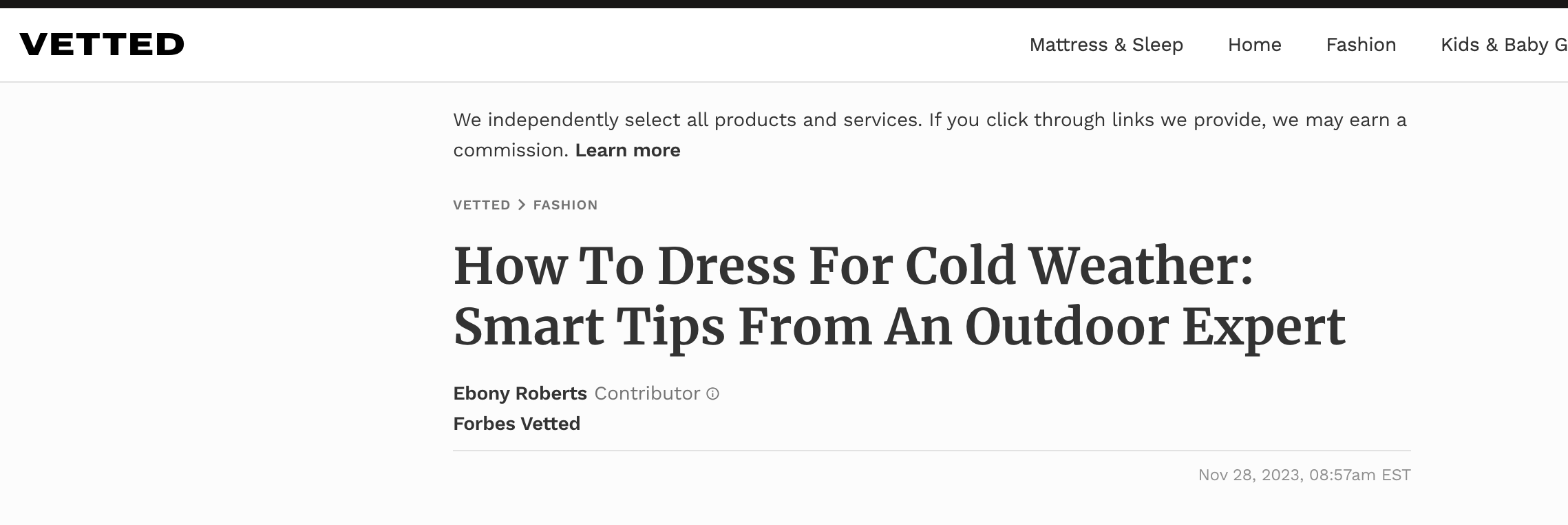
E-E-A-T Best Practices Summarized
Here are some example best practices for each area, summarized. It's a lot to take in, you can also visit (and bookmark) the handy EEAT spreadsheet Aleyda Solis created as a reference chart when creating content.
Showcase Credentials and Qualifications Prominently
- Dedicate an entire "About Us" page to detailing staff bios, credentials, certifications, education, awards, and authoritativeness indicators
- List specific credentials in author bylines (John Smith, MD) and link to longer bios
- Display trust badges confirming verified identities of experts on your team
Emphasize Depth/Breadth of Hands-On Experience
- Quantify years of professional experience in your space (& require this for all contributing writers)
- Share insights learned exclusively from on-the-ground work vs. theoretical knowledge
- Use strategic client testimonials describing firsthand experience
- Publish detailed case studies showing real examples of delivering value
Cite External Validation and Sources
- Link out to reputable media features and recognition of your business from mainstream publishers
- Reference research from accredited institutions and include links to original studies
- List metrics like number of clients served, results achieved, reviews obtained
Show Editorial Oversight and Compliance Practices
- Disclose your fact-checking processes and editorial standards
- Maintain strict corrections, ethics, and transparency policies
- Confirm compliance with industry regulations and continuing education
The goal is to explicitly connect the dots for readers on how your content and services fulfill the EEAT criteria. This earns trust and authority.
Strategies to improve content for EEAT
Gaining recognition for your EEAT worthiness takes a comprehensive, strategic approach. But the impact on long-term credibility and loyalty is invaluable. Here are some strategies you can implement within your site to better leverage and showcase EEAT.
Leverage Structured Data
Implement relevant schema markup to make your EEAT credentials explicit to search engines:
Author Schema:
- On author profile pages, use Author schema to highlight contributor credentials, links to published works, years of experience in the field, education and affiliations.
Article Schema:
- In article bylines and page metadata, include Article schema detailing the author’s credentials, links to their extended bio page, and any co-contributors.
Review Schema:
- To demonstrate third-party validation of your business, implement ratings, reviews and aggregate scores using Review schema. Surface relevant feedback.
FAQ Schema:
While FAQ schema no longer grants improved visibility in SERPs, it still helps search engines like Google understand the conten.
- For advice content addressing consumer questions, use FAQ schema to demonstrate you understand and provide answers to top user pain points.
- Incorporating schema.org markup is a best practice for showcasing EEAT authority indicators search engines may otherwise overlook on a webpage.
Showcase Credentials in Multiple Places
Reinforce author credentials, experience and qualifications consistently across all website pages and content, including:
- Article bylines and author bios
- Press releases and media kits
- Website bios and About pages
- Landing pages and service descriptions
- Email newsletters and marketing collateral
- This repetition establishes your site and writers as credible authorities readers can depend on for expert advice. It also ensures search engines fully grasp the depth of your EEAT worthiness through clear, consistent signaling.
Demonstrate mastery of your topic by publishing comprehensive, advanced content. Some best practices include:
- Cover granular questions and multiple perspectives most beginners wouldn’t know to ask
- Provide nuanced analysis that connects concepts and surface non-obvious insights
- Share insider terminology and demonstrate fluency in the finer details of your field
- Explain the “why” and “how” behind key ideas in addition to defining what they are
- Address and debunk common misconceptions that require extensive expertise to distinguish
- Compare and contrast academic perspectives versus real-world experience-based perspectives
- Spotlight innovations or breakthrough research spearheaded by your team
- The goal is crafting content that displays a command of both high-level strategic issues as well as the tactical minutiae. This establishes your credentials for advising readers across the full spectrum of challenges they may face.
Solve Consumer Pain Points
Creating content that directly addresses the biggest questions and problems your audience faces is key. Some best practices include:
- Researching top-of-funnel informational queries and questions in your space - what do people tend to ask when first learning about this topic? Cover those extensively.
- Surveying existing customers on the most pressing problems they faced before purchasing your product/service, and creating FAQs and advice content addressing those pain points.
- Analyzing customer service tickets and identifying recurring consumer issues and misunderstandings that information could help resolve proactively.
- Featuring strategic testimonials from past customers highlighting how your product/service solved a critical pain point for them.
- Publishing comparisons and compatibility guides for popular products people may be evaluating alongside yours. Make it easy for them to see your solution fits their needs.
- Essentially, the content and messaging should focus less on product features and more on understanding and empathetically addressing reader challenges. This builds authority and trust.
Secure Endorsements and Contributions
Featuring respected industry authorities offering quotes, co-authoring content, or publishing guest posts lends immense credibility through association.
- Identifying the most reputable specialists, organization leaders, or researchers in your field as potential sources
- Reaching out to credible figures when publishing articles on relevant topics they could contribute expertise to
- Securing permission to republish positive quotes or testimonials from established authorities that reinforce your own trustworthiness
- Coordinating joint webinars, case studies, or bylined articles showcasing the results of collaborations with prominent organizations in your industry
- Promoting contributed guest posts on your blog authored by niche experts your target audience already knows and follows
- The key is tapping into rising tides and gaining access to influencers with existing authority who can provide validation. This transfers an extra layer of credibility that boosts perceived EEAT.
Highlight Alignment with Trusted Standards
This is more industry dependant, but can greatly help improve trust for some types of businesses. Proactively calling out compliance and alignment with respected industry standards and codes of conduct helps reinforce integrity and excellence. Some best practices include:
- On an ecommerce website, prominently display trust badges confirming certification from organizations like the Better Business Bureau or Trustpilot. These audit for quality and ethical business practices.
- For financial sites dispensing investment advice, showcase registration with SEC-approved accreditations like the CFA Institute that require advisor ethics training and continuing education.
- On health and medical sites, visibly feature compliance with HONcode principles for trustworthy health information or adherence to Health on the Net's code of conduct.
- For sites with forums, user-generated content or interactive features, confirm compliance with COPPA and child safety protection regulations.
The key is prominently disclosing alignment with the exact oversight organizations and compliance programs industry insiders view as the gold standards for ethics and excellence. This cements your commitment to reader interests above all.
Publish Regular Disclosures and Transparency Reports
Releasing annual disclosures benchmarking your adherence to quality standards and best practices fosters credibility through radical transparency. Useful metrics to spotlight include:
- Fact-checking rates: Percentage of all publicly published content that underwent fact verification. Disclose your process.
- Content freshness index: Show how much of your catalog has been reviewed/updated within the past year to ensure information is current.
- Consumer complaint response rates: Share percent and average resolution times for addressing user complaints.
- Reader satisfaction surveys: Spotlight survey feedback and testimonials demonstrating you resolve consumer pain points.
- Expert contribution rates: Disclose what portion of content features quotes, co-authorships or guest posts from credentialed industry specialists.
- Corrections and revisions: Keep an updated, publicly accessible corrections page listing any factual errors you’ve fixed. Show dedication to accuracy.
Sharing disclosures like these annually showcases an uncompromising commitment to upholding standards, serving consumers, and fixing problems. This builds authority and trust.
Undergo Voluntary Auditing and Verification
For businesses in highly regulated industries like finance, healthcare, legal services, or insurance, committing to voluntary third-party audits can powerfully showcase trustworthiness.
Examples include:
Legal Services:
Seek out certification from organizations like the American Bar Association that audit for adherence to ethical regulations and requirements like maintaining malpractice insurance.
Wealth Management:
Apply for a verification like Registered Investment Advisor status from the SEC, requiring in-person audits, staff background checks, reviews of advisor credentials and ongoing ethics training.
Healthcare:
Pursue The Joint Commission accreditation which audits for standards in patient safety, quality of care, transparency and staff credentialing.
Insurance:
Request verification from oversight groups like Verisk Analytics or the Better Business Bureau to allow them to independently review your policies, procedures, transparency and consumer complaint responsiveness.
The key is to identify the most prestigious auditing/verification bodies associated with integrity and consumer protection in your vertical, and then proactively request their review. Promoting an independent, voluntary audit signals devotion to quality.
The goal is to reinforce your EEAT worthiness across all content types and placements. Some verticals like finance or healthcare may require more disclosures, while other industries can focus more on showcasing experience. But optimizing for expertise, experience, authoritativeness and trust should become second nature.
What about Bing? Does it use EEAT?
While Google pioneered the concept of E-A-T to describe content excellence, other search engines have similar quality rating systems.
Microsoft Bing refers to their version of EEAT as Quality Content or QC. Like Google, Bing seeks to provide the most trustworthy, credible information in search results.
Bing evaluates several QC factors when determining content rankings, including:
Expertise - Assessing depth of knowledge, experience level, and qualifications of content creators
Authoritativeness - Weighing influence and reputation of sources based on references and citations
Trustworthiness - Evaluating editorial standards, transparency, and adherence to ethical codes
Relevance - Determining topical applicability and usefulness for search intent
Bing rewards pages that score highly on these quality dimensions with better indexing, rankings and visibility.
And just like Google, Bing places even greater scrutiny on Your Money or Your Life pages - requiring heightened demonstrations of expertise and integrity for medical, financial or legal content.
So no matter which search engine, optimizing for E-E-A-T remains imperative for content teams targeting visibility. The focus should be serving users with dependable, high-quality advice.
Ideas for Overcoming Common Challenges with EEAT
Gaining recognition for high expertise, experience, authoritativeness and trust can be challenging. Here are some common obstacles sites face, along with mitigation strategies:
Building Trust as a New Site
New websites lack historical evidence of expertise and reader endorsements. Strategies to compensate:
- Spotlight team member credentials and backgrounds
- Link to staff published works and media recognition
- Temporarily feature advisor headshots/bios more prominently
Appearing Outdated or Stagnant
If websites go too long without new content or updates, they may appear stale. Best practices:
- Set a regular content cadence for publishing new advice articles
- Maintain a blog or resources section that is frequently refreshed
- Remove outdated materials or mark with publication/update timestamps
Monitoring Content Quality at Scale
The more content published, the harder it becomes to ensure each piece demonstrates expertise. Tactics to maintain quality:
- Institute stringent editorial guidelines and fact-checking processes
- Have credentialed subject matter experts approve content
- Audit a sample of posts periodically to confirm standards
Lacking an Influencer Network
Without existing media relationships or industry ties, it can be difficult convincing leaders to co-author or lend quotes.
- Identify rising stars or second-tier names who may be more receptive to partnerships with a new platform for added exposure.
- Develop detailed contributor guidelines to reassure influencers their time will be put to good use for high-quality co-created content.
- Proactively promote influencer contributions across social channels upon publication. Aim for a value-add partnership.
- Volunteer your own expertise and thought leadership for other industry publications to progressively build relationships with editors and fellow contributors who may eventually reciprocate.
Challenge: Appearing Unestablished
Newer sites may struggle appearing unseasoned compared to competitors, and which makes it hard to get links, quotes and start building your online presence.
- Invest in a professionally-designed website with premium aesthetics signaling you are well-resourced, serious and built to last.
- Spend time creating in depth content and guides. Think quality over quantity at this stage, don't launch with a bunch of thin content.
- Pursue long-lead PR opportunities (e.g. roundups, listicles) where the focus is on expertise vs. brand recognition.
Staffing Expertise at Smaller Businesses
Small companies may struggle creating enough unique authoritative content while relying on just a few in-house experts.
- Explore freelancer platforms to supplement gaps in niche topic expertise. Require portfolio samples demonstrating credentials.
- Set up contributor guidelines clearly outlining editing processes and fact-checking policies to uphold quality.
- Reward employees for achieving micro-credentials through continued education in their focus areas.
Appearing Biased or Promotional
Content perceived as overly promotional of the brand vs objective risks credibility. This can be especually difficult for influencer and affiliate sites who built there sites with the intention of promoting content. Over time, you will need to work on strategies to provide long-term value and build trust.
- Publish a mix of informational articles not directly selling products/services but providing broader value.
- Adhere to strict editorial guidelines of transparency and disclosing any affiliations that could introduce bias.
- Seek trusted media partnerships for co-created content and limit branding.
Lacking Visual Authority Cues
Websites very text-heavy in their content may fail to adequately convey authority visually.
Strategies:
- Incorporate more staff headshots and bios showcasing credentials.
- Display recognizable media logos where featured.
- Showcase visual emblems of trust signals like certifications, badges and awards.
Future Predictions for EEAT
As consumers increasingly turn to the internet for advice, the importance of creating content that demonstrates expertise, experience, authoritativeness and trustworthiness will likely intensify.
Disclaimer: The following predictions are purely theoretical and not guaranteed outcomes.
Here are some possibilities for how EEAT may shape content strategies moving forward:
More Visual & Interactive Content
Static text may be supplemented by emerging formats like podcasts, videos, and interactive content that enable brands to showcase credentials uniquely. We know Google can understand and evaluate audio, video and more and with this understanding usage of different media formats may become more critical.
AI Assistants and Content
As AI grows more advanced, consumers may prefer advice from actual humans with professional credentials compared to machine-generated content. Brands will need to showcase their human experts. However, AI could play a supplemental role in scaling fact-checking and source verification.
Increased Affiliate and Influencer Disclosures
Regulators may mandate more prominent disclosures when content creators have affiliate revenue shares or promotional partnerships with brands they review or recommend. In addition, Google may downweight websites or links that recommend products or services to avoid potential bias.
Crowdsourced EEAT Ratings
Google may introduce a crowdsourced EEAT rating system where site visitors and subject matter experts can provide feedback on the quality, accuracy and trustworthiness of pages. Low ratings risk visibility cuts.
Eroding Trust in Information
As fake news articles and misinformation spread across social platforms, consumers may become more skeptical of all content and advice online, even from legitimate sources. This erosion of trust damages EEAT, which could have see many different scenarios presented
- Value of Verified Identities
- As misinformation makes attributing content to genuine experts with credentials more difficult, the value of verified identities and attributable content tied to real-world professionals will only increase for establishing authority.
- Differentiating Fact Reporting
- News sites and journalists face especially high burdens proving adherence to accuracy, editorial standards, and corrections policies in a post-truth information environment. Transparency around sourcing and fact-checking methodologies becomes mandatory for establishing authoritativeness.
Additional Considerations
Localization and Cultural Context
When publishing content for international audiences, having local market experience and recognizing cultural nuances is key. Global sites may need both resident experts in each region and context experts who can adapt advice appropriately. Interpretations of authority vary.
Accessibility Best Practices
Ensuring content accessibility for readers with disabilities is an additional component of serving consumer needs and interests. Sites proactively optimizing for screen readers, captions/transcripts, alt text, and inclusive imagery better fulfill duties around transparency, social responsibility and trust.


